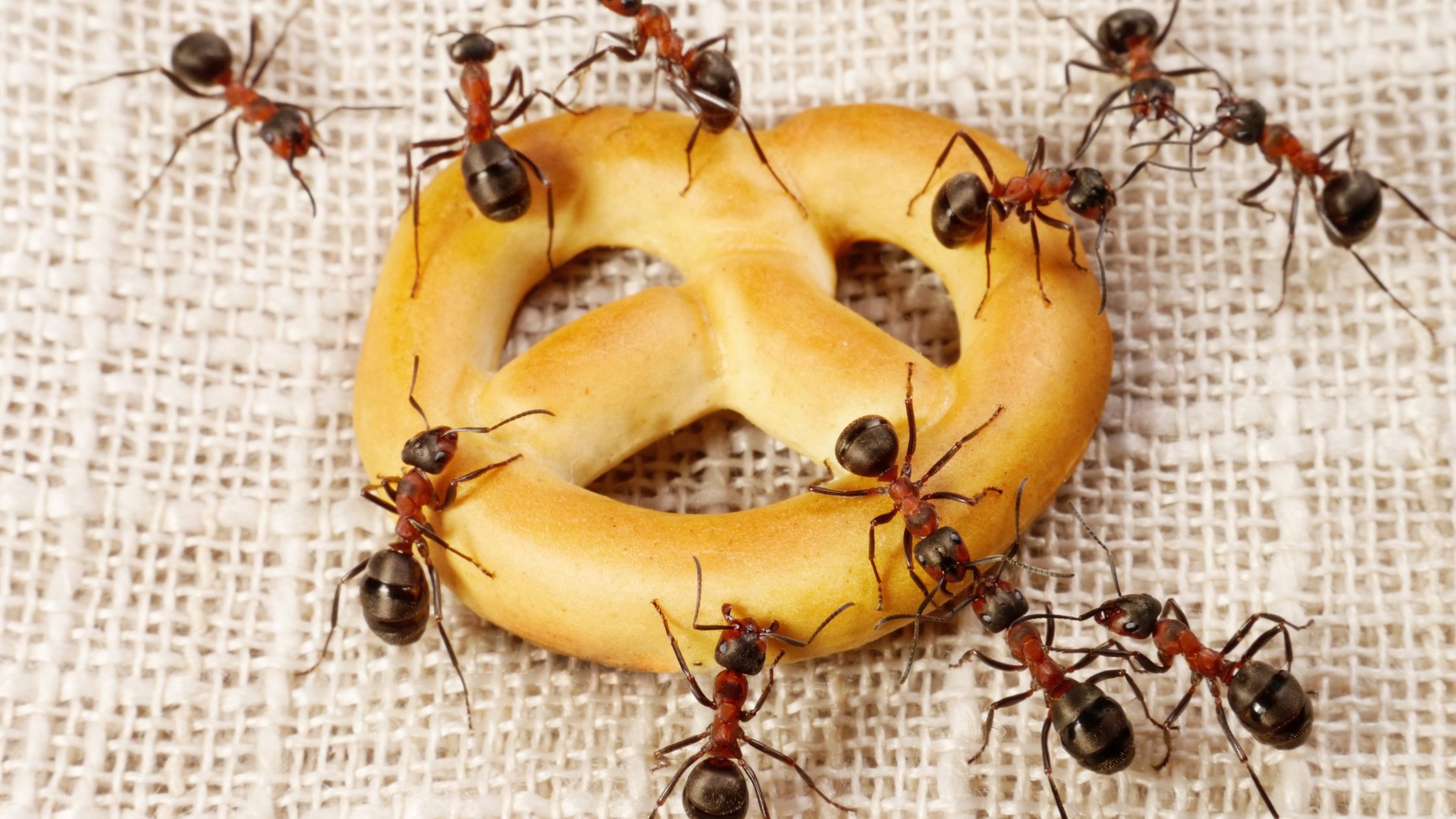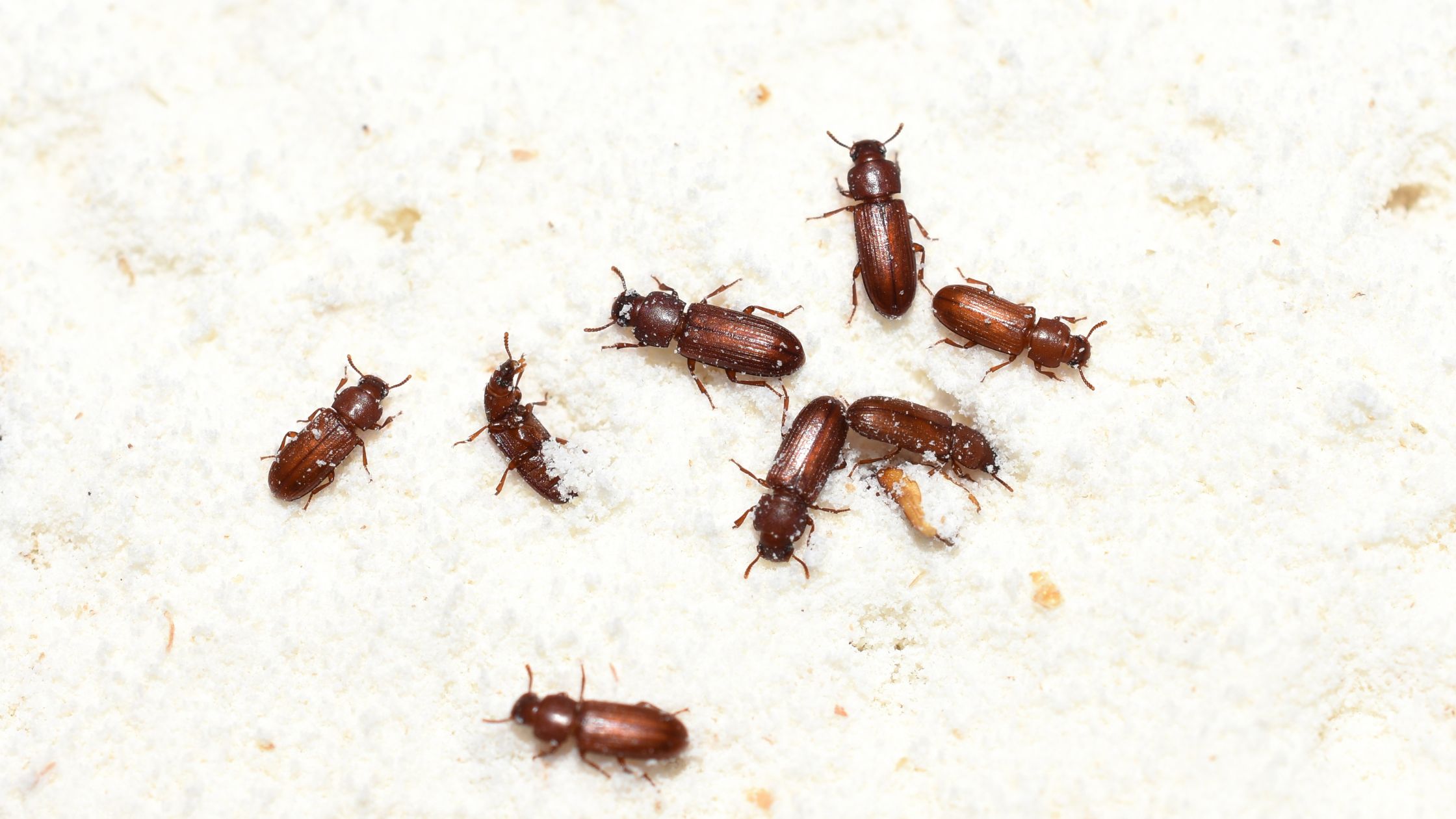I was completely unprepared for my monthly pantry moth trap check. Normally I check the trap and there’s nothing there. This time I was astonished to see nearly a dozen little moths stuck to the tape. I’m so focused on making sure my preparedness pantry is clean and organized that I was astonished to see this many moths.
Pantry moths, and other pests, can be quite a challenge. Which is why I thought it would be a good idea to share about the different types of pests that can get into your food storage. I’ll also share ideas about how to deal with them.
Let's start by identifying these pests and where they tend to hang out.
First, it’s important to know that finding pests in your food storage doesn’t mean your house is dirty. Often, these critters hitch a ride in your groceries or find their way through tiny openings and sneak unnoticed into your pantry. Here are some of the more common pantry pests:
- Beetles, there are so many different kinds. The most commonly found beetles include drugstore, confused, saw-toothed, spider beetles, warehouse, and flour beetles. They tend to target pantry staples like flour and grains. Infested food should be discarded, especially because warehouse beetle larvae hairs may trigger an allergic reactions if consumed.
- Cockroaches are the worst. There are several different kinds and sizes. They tend to swarm your trash or possibly get into your dishwasher (remember to clean that dishwasher food trap out regularly) and their droppings may cause allergies.
- Indian Meal Moths. These are those little flyers that love setting up shop in your pantry. They usually come in with flour or pasta from the store and can lay hundreds of eggs, causing a real hassle. This is part of why I encourage freezing grains and flours before putting them into the pantry. It won’t stop them, but it can help reduce their numbers.
- Pharaoh Ants. These tiny yellow or light brown ants tend to alternate between a desire for carb-rich and then protein-rich foods. Unfortunately while they’re looking for their next food fix, they may find your pantry.
- Spiders can sometimes be found hanging around in your pantry, especially if there’s an infestation of other bugs they can eat.
- Weevils are tiny bugs that feast on rice, barley, corn, and oats. They’re so small that they show up simply as dark specs in the flour or grain.
- Yellow Mealworms love damp, moldy food, so if you spot them, the item was likely already expired or got too damp.
What Pantry Pests Like to Eat
The critters found lurking in your pantry or long-term food storage have got their eyes set on your food. They won’t bite or sting, but nobody wants them around. Both adults and larvae can be found in your food storage. They are most commonly found in starchy or sweet things but that’s not all they eat. And they’re not too picky when it comes to gluten free or gluten full, they like it all. Common food items they like include:
- Cookies
- Cornmeal or corn kernels
- Crackers
- Flour
- Legumes - beans and peas
- Nuts and seeds - and flours made from them
- Pasta
- Powdered milk
- Spices
- Sugar
- Sugary drink mixes
How to Keep Pests out of Your Food Storage

Preventing pantry pests from sneaking into your food storage is important. If possible you want to get them out before they get into your food. It can be a tricky proposition because some of them are chewers, eating through plastic, cardboard, or even waxed paper. Rodents can also be relentless, after all, they’re hungry. But not to worry, there are ways to safeguard your food.
Keep your storage areas as neat as you can. Tidy up any spills and moisture as quickly as possible to prevent the bugs from making their home in your pantry.
Be sure to rotate long-term storage items regularly to keep things fresh. Learn how to build a preparedness pantry and great tips for how to properly rotate and document your food store when you join The Preparedness Pantry Masterclass.
Seal items tightly and only open when you’re ready to use them. It’s important to regularly check your pantry, especially your long-term food storage, for any signs of unwelcome visitors. Glass containers are a great option when possible, and freezing flours, nuts, and grains may help reduce the potential for an infestation.
For an aromatic twist some people encourage keeping garlic, bay leaves, or mint in the pantry area to help repel bugs.
If you do discover an infestation it’s important to pull out all of the items in your pantry and check for chewed boxes, rodent droppings, or other telltale signs like webs and debris on the shelves or in corners.
Get rid of any contaminated food in well-sealed trash bags – this is necessary to prevent the pests from coming back into your house. Vacuum and scrub your food storage area, wiping down every single surface. If your infestation is severe or keeps happening you may need to hire a professional to address the situation.
In conclusion
Remember, keeping a clean and dry house, sealing cracks, and promptly disposing of infested items can help prevent these uninvited pantry pests from taking over. They’re not there because your house is dirty. They’re simply looking for food and/or shelter and they often come in with the groceries. If you do have an infestation take the time to pull everything out of your pantry and thoroughly clean and inspect your items before putting them back in the pantry.



